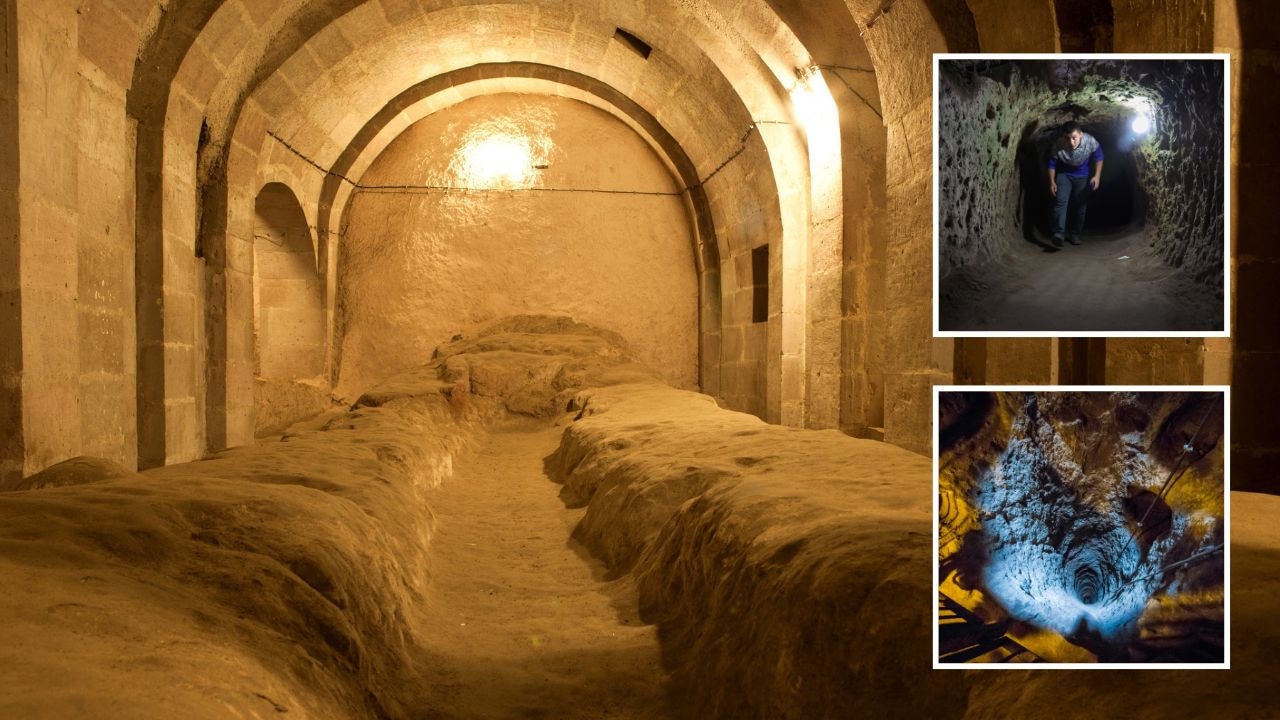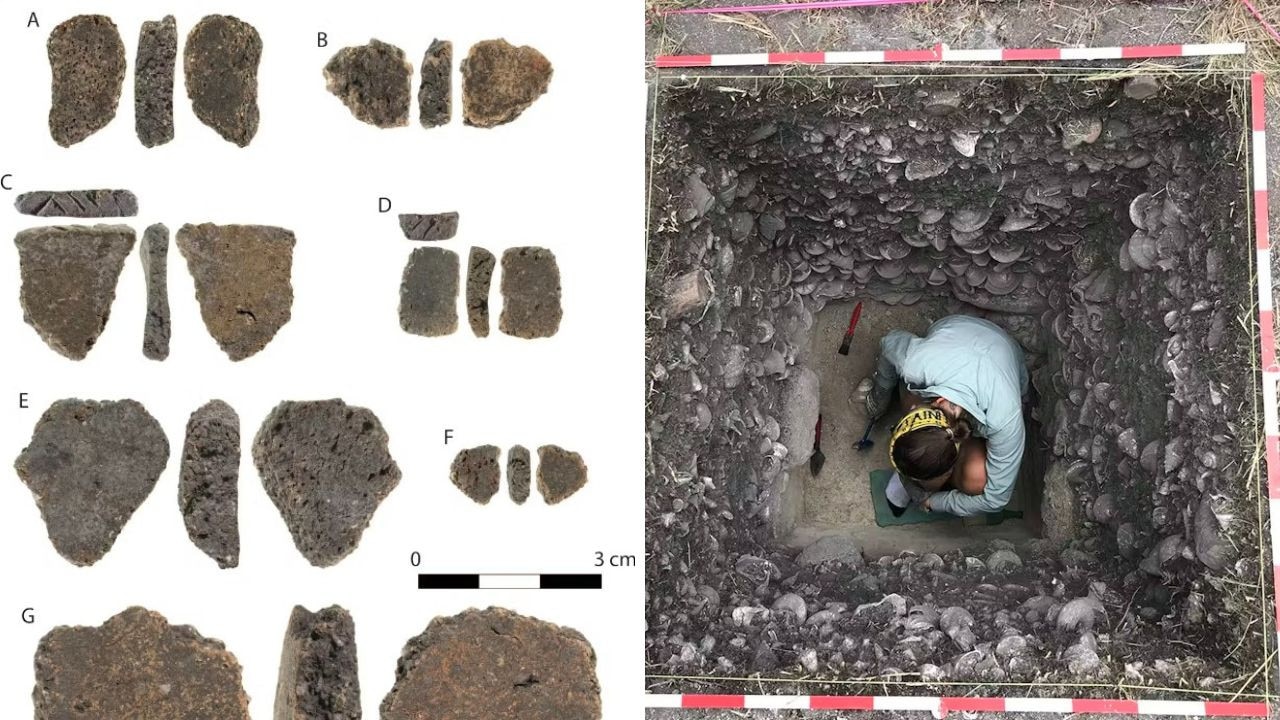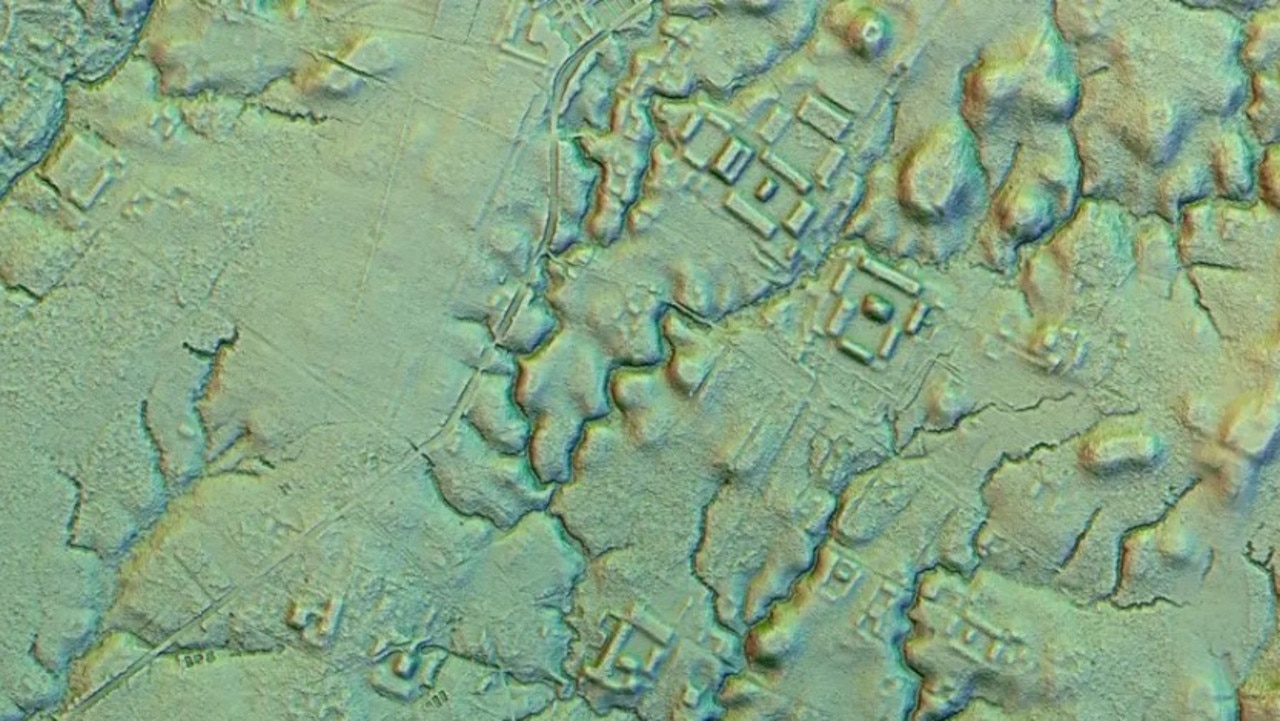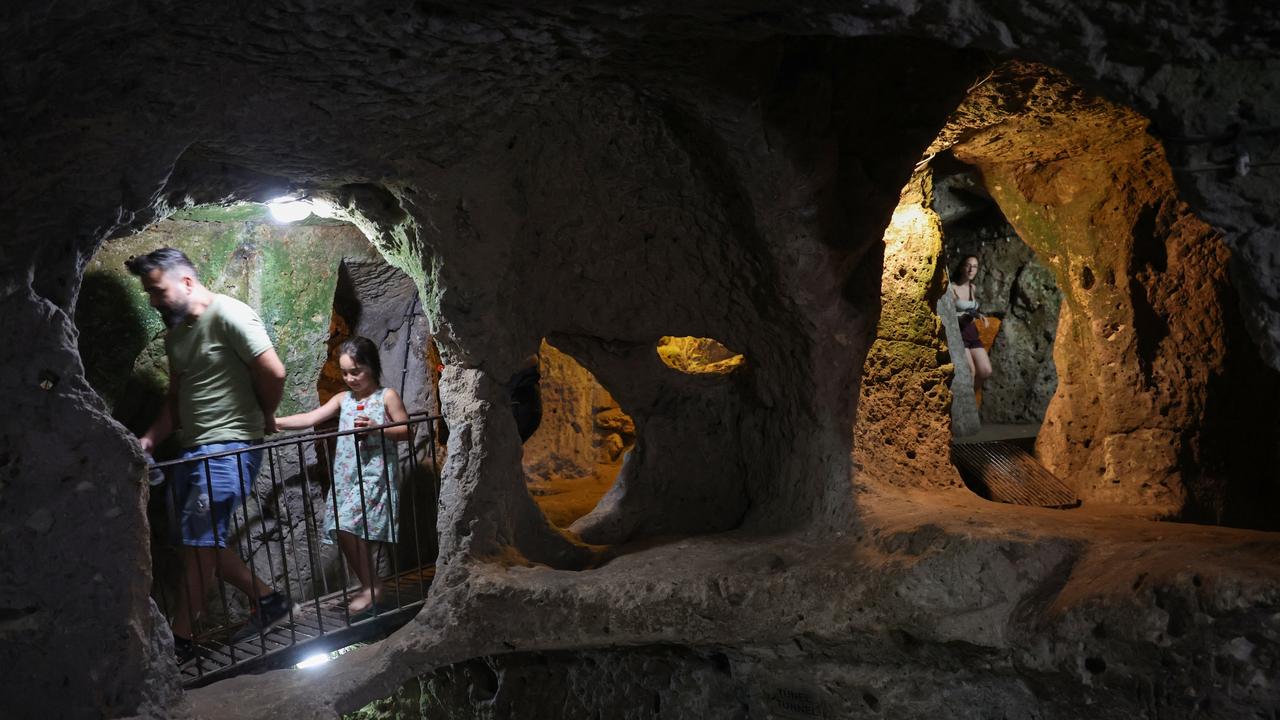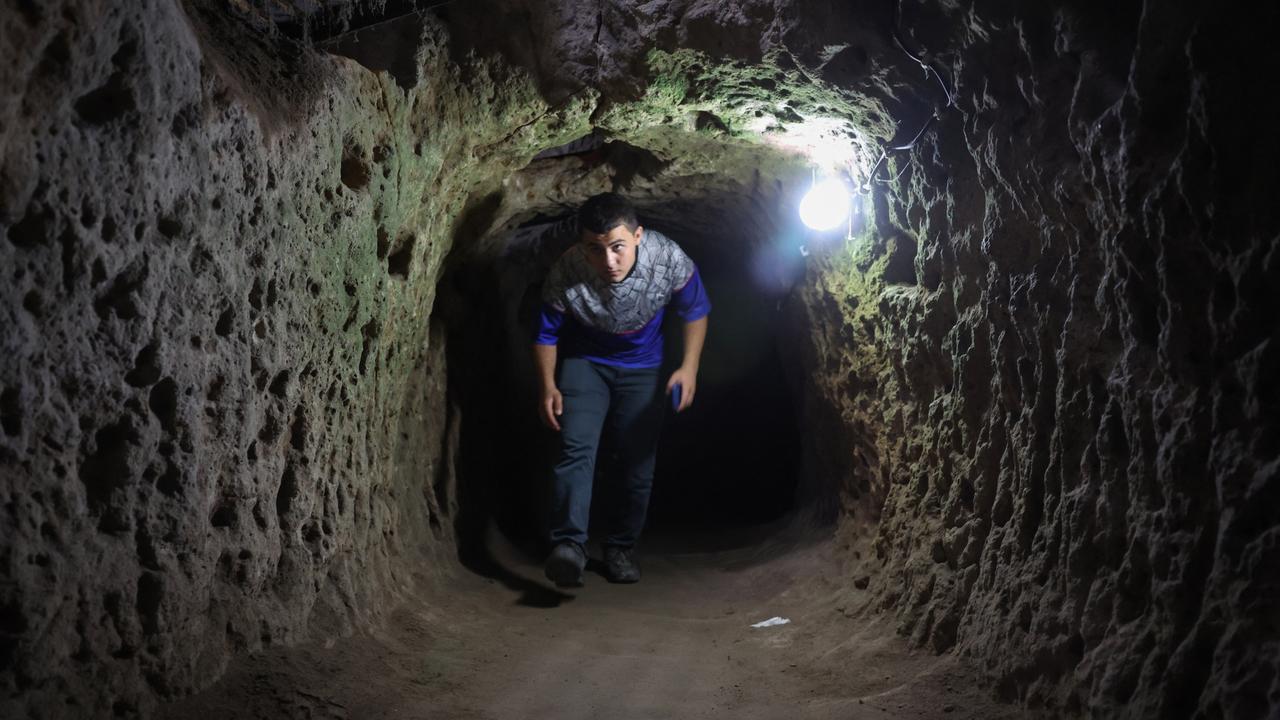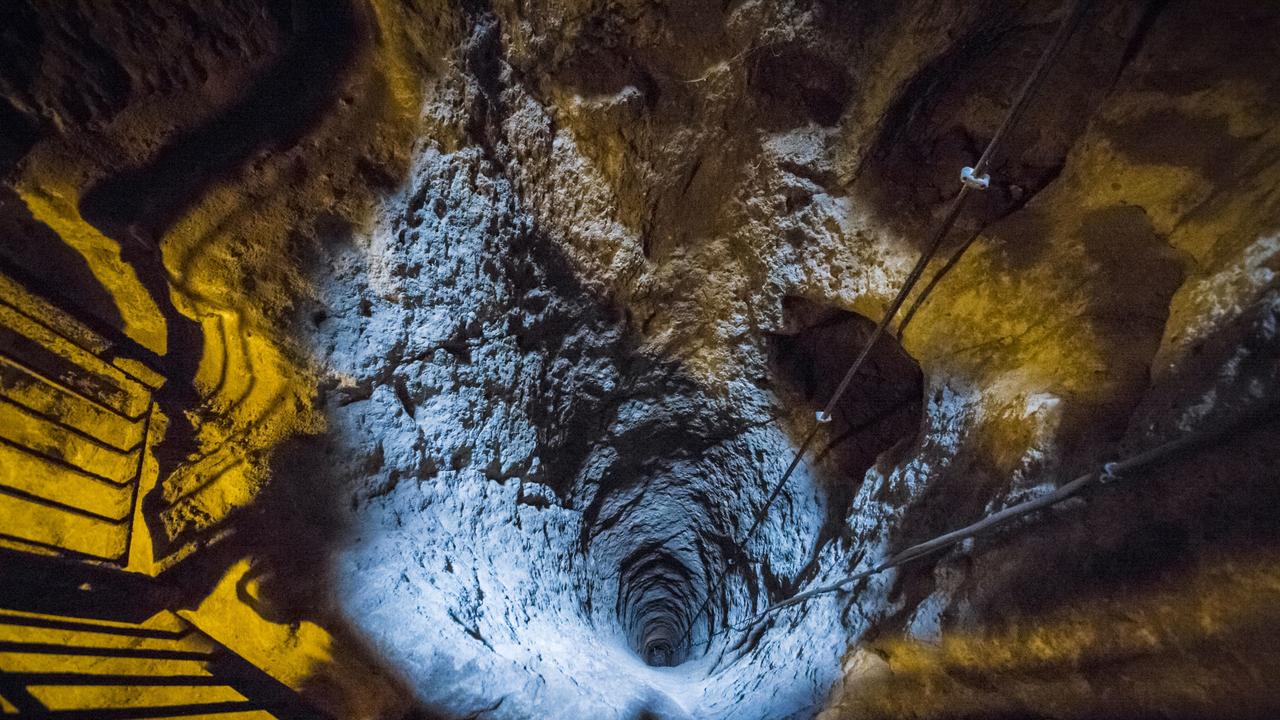

Man knocked down basement wall to find 2000-year-old underground city
A Turkish homeowner chasing his chickens through a hole in his basement during renovations came across an abandoned underground Turkish city that once housed 20,000 people.
In an effort to recapture his escaping poultry, the unidentified man knocked down the wall in the 1960s to reveal a dark tunnel leading to the ancient city of Elengubu, known today as Derinkuyu.
Derinkuyu, burrowed more than 85m beneath the Central Anatolian region of Cappadocia, is the largest excavated underground city in the world and is believed to connect to more than 200 smaller, separate underground cities that were discovered in recent decades, Turkish guides told the BBC.
Inside the subterranean city — whose entrances connect to more than 600 private homes in the modern, surface-level region of Cappadocia — researchers found 18 levels of tunnels containing dwellings, dry food storage, cattle stables, schools, wineries, and even a chapel.
The city was also equipped with a ventilation system that supplied its residents with fresh air and water.
“Life underground was probably very difficult,” the guide, identified as Suleman, told the outlet.
“The residents relieved themselves in sealed clay jars, lived by torchlight, and disposed of dead bodies in [designated] areas.”
The exact date the impressive city was built remains contested, but ancient writings dating back to 370BC indicate Derinkuyu was in existence.
The city was likely originally used to store goods but was then used as a bunker to escape from foreign invaders — the dimly lit hallways were intentionally built narrow and low so intruders would be forced to stoop and enter in single file.
The doors connecting each level were blocked by half-ton boulders only movable from the inside that contained a small hole that allowed residents to spear the confined trespassers.
Though it remains a mystery who the architects were, researchers believe the Hittites — a Bronze Age Anatolian people — “may have excavated the first few levels in the rock when they came under attack from the Phrygians around 1200 BCE,” A. Bertini, an expert in Mediterranean cave dwellings, wrote in his 2010 essay on regional cave architecture.
The Phrygian invaders, an Indo-European-speaking empire that ruled Anatolia for 600 years, are credited with building the bulk of the city in the centuries before Derinkuyu changed hands several more times, including between the Persians, Christians and Cappadocian Greeks.
The city likely reached its peak population of 20,000 during the 7th-century Islamic raids on the Christian Byzantine Empire, the BBC reported.
After 2000 years of use, Derinkuyu was finally abandoned in 1923 by the Cappadocian Greeks, who faced defeat in the Greco-Turkish war and escaped to Greece.
One century after it was rediscovered, the ancient city is open to visitors curious to experience life underground in Derinkuyu, which was added to the UNESCO World Heritage List in 1985.
This article was originally published by the New York Post and reproduced with permission
Recommended Videos
 Stunning Victoria Crowned Pigeon!5787 views
Stunning Victoria Crowned Pigeon!5787 views Meet Cute Frogmouth Babies, They Have Very Expressive Looks524 views
Meet Cute Frogmouth Babies, They Have Very Expressive Looks524 views-
Advertisements
 The male has a reddish mantle. The female has a green mantle.931 views
The male has a reddish mantle. The female has a green mantle.931 views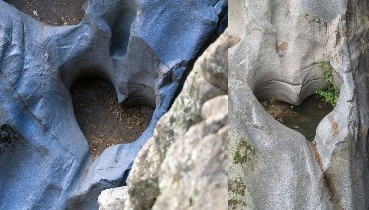 Heart Rock - This is an easy trail near Crestline, CA, USA.503 views
Heart Rock - This is an easy trail near Crestline, CA, USA.503 views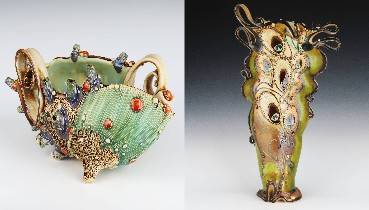 20 Colorful Sculptures With Intricate Details, As Created By Carol Long408 views
20 Colorful Sculptures With Intricate Details, As Created By Carol Long408 views NASA’s Juno Spacecraft Delivered A Spectacular Aerial View From Io, Including Mountains And A Lava Lake235 views
NASA’s Juno Spacecraft Delivered A Spectacular Aerial View From Io, Including Mountains And A Lava Lake235 views Photographer Captures Rare Rainbow Waterfall Phenomenon in Yosemite51 views
Photographer Captures Rare Rainbow Waterfall Phenomenon in Yosemite51 views Professional Photographer Captures Perfectly Posed Birds, And Here Are The Best 58 Photos15727 views
Professional Photographer Captures Perfectly Posed Birds, And Here Are The Best 58 Photos15727 views
